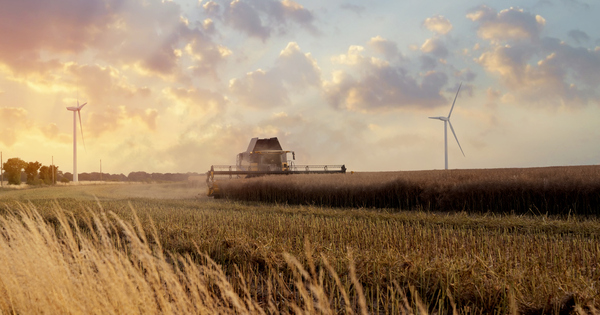
Waitrose, McDonald's, and Barclays-backed pilot aims to make regenerative farming 'more achievable'
Business Green 9 months ago

layersDaily Sustainability Digest
Published about 5 hours ago
The centre of gravity in sustainable construction has transitioned from intention to execution. The newly enacted Planning and Infrastructure Act establishes a Nature Restoration Fund to balance ecological impacts from development. This aligns environmental sustainability in construction with legal accountability, driving developers to integrate eco-design for buildings, sustainable building practices, and nature-positive design verified through Whole Life Carbon Assessment and lifecycle assessment. Firms must now quantify embodied carbon and demonstrate measurable reductions in the carbon footprint of construction, embedding life cycle thinking in construction at design stage to secure consent.
Show MorearticleFeatured News

OPINION: 'A new reality for UK textile collections - And we can’t afford to face it alone'
19 hours ago

MARKET REPORT: Glass, metals, organics, paper, plastics, textiles, wood December 2025
20 hours ago

Bristol rejects plans to move to three-weekly bin collections
22 hours ago

RePower Ukraine Christmas Campaign to support hospitals facing blackouts and severe cold
22 hours ago

'Build, baby, build': Government's flagship Planning and Infrastructure Act enters info...
22 hours ago

Trump Media to merge with Google-backed fusion energy firm in $6bn deal
22 hours ago
play_circleFeatured Videos

How Solar Changed in 2025 (And What's Next)
4 days ago

Greenwashing: Tricks & Real Examples of Corporate Deception
5 days ago

Une entreprise vraiment durable est-elle possible? Pièges & exemples
9 days ago

Ana Belizário: ‘Timber should be the material of choice in the global south’
10 days ago

Why Coastal Cities Are Betting on Osmotic Power
11 days ago

Bold, Beautiful and Energy Efficient, Highfield Ave
11 days ago
podcastsFeatured Podcasts

Beyond the Core: Building Data Centers in America’s Next Frontier
19 hours ago

Love of a Cold Climate
22 hours ago

Eliminating Energy Waste with Smart HVAC Optimization with Brad Pilgrim
3 days ago

Green Leasing Basics: ICYMI
5 days ago

City Transport: Faster, Cheaper, Greener
8 days ago

Tata Power and India's Energy Transition: Balancing Growth and Decarbonization
10 days ago
Get your opinion heard:
Whole Life Carbon is a platform for the entire construction industry—both in the UK and internationally. We track the latest publications, debates, and events related to whole life guidance and sustainability. If you have any enquiries or opinions to share, please do get in touch.
WLC Assistant
Ask me about sustainability











